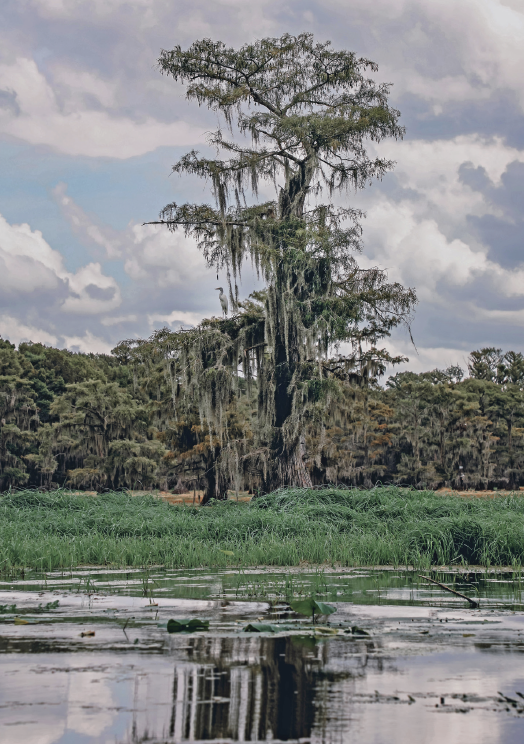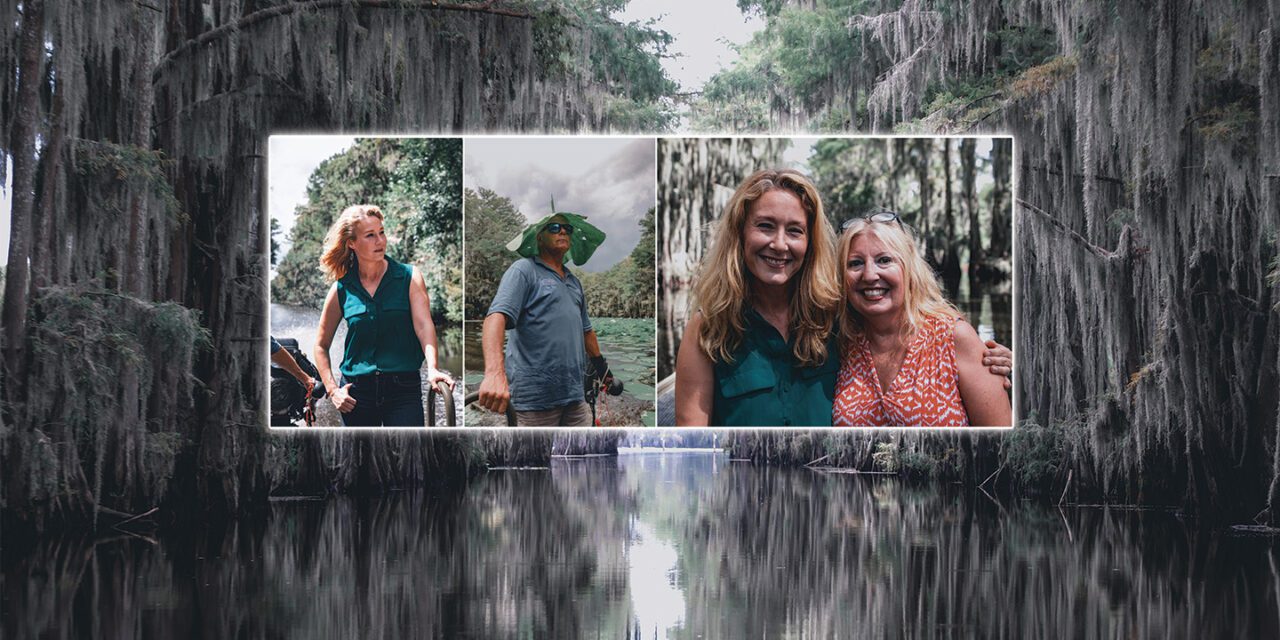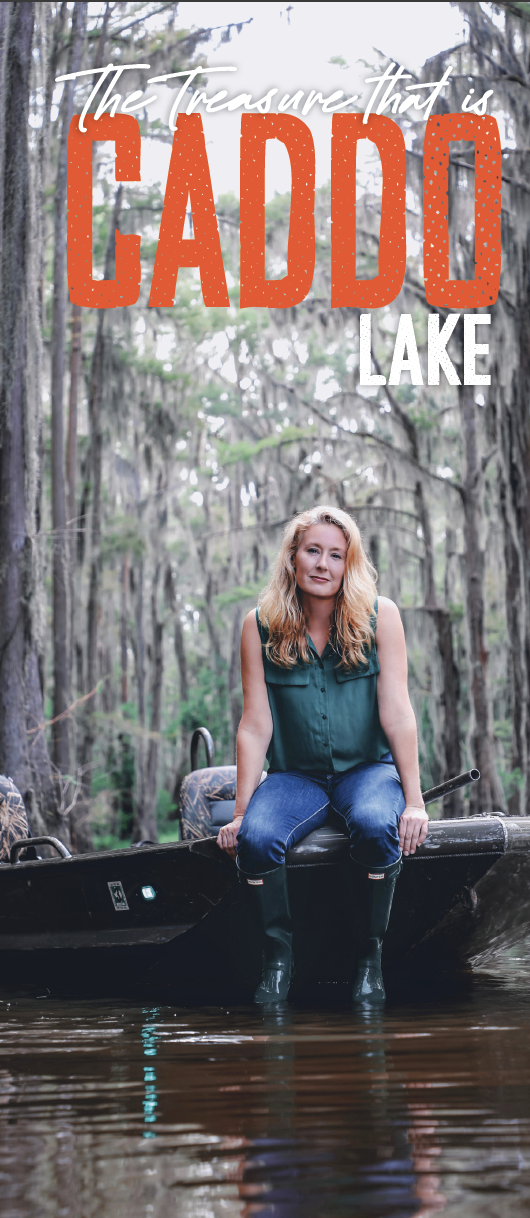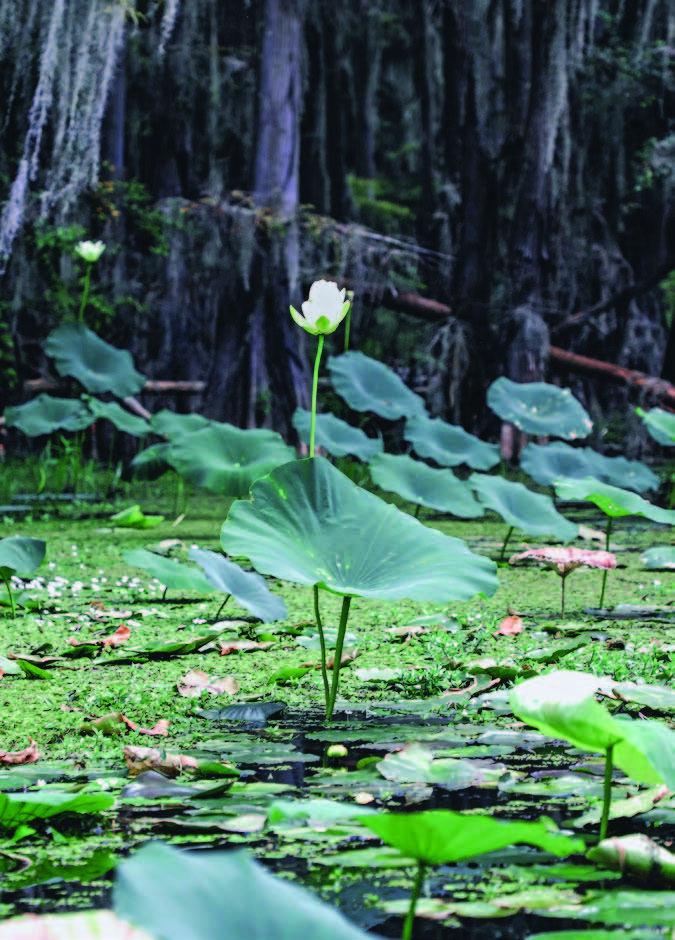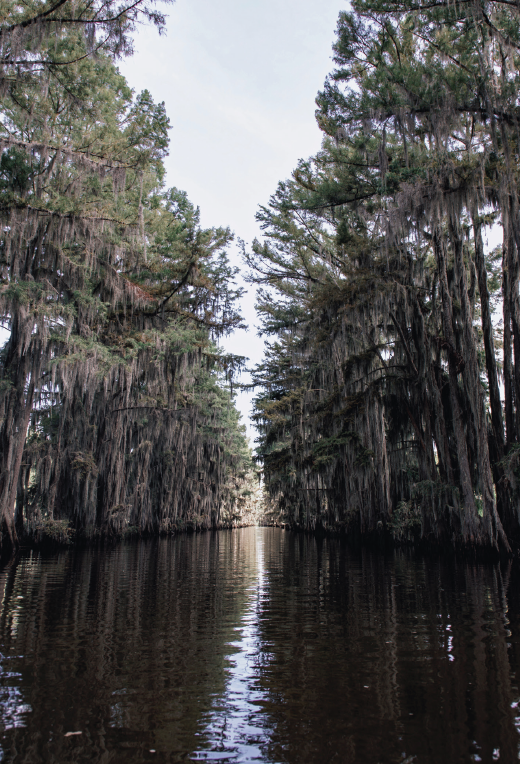by Scott Anderson
Travel + Leisure magazine recently named Caddo Lake one of the nation’s 12 most beautiful lakes. The article highlights the lake’s maze of bayous, the cypress forest with its canopy of Spanish moss and its bevy of unique wildlife, both real (alligators) and uncertain (Bigfoot).
Laura-Ashley Overdyke said she has been
“blown away” by the response to the article, but she was not surprised by the recognition.
“I’d love to claim credit, but I didn’t have anything to do with it,” she said. “When I first got this job, we had a guy come down from National Geographic, Sal Melitollo. He’s been all over the world. He got to Caddo Lake, and he was like, ‘This is one of the most beautiful places I have ever seen in my life.’” Overdyke is executive director of the Caddo Lake Institute. In that role, she leads efforts to preserve the beauty of the 27,000-acre wetland ecosystem. “The beauty of the cypress trees, the beauty of the Spanish moss. The beauty of the wading birds — you see egrets and herons all over the place. People who aren’t from here and are not used to a swamp, they can’t believe that it’s real. It has an other-worldly quality to it.” The Caddo Lake Institute was founded in 1993. One of the co-founders of the nonprofit organization was Don Henley, who grew up in Linden, Texas, fishing at Caddo Lake before becoming a member of the Eagles. Henley also became a conservationist. He became enamored with Henry David Thoreau and bought Walden Pond in Massachusetts to keep that property from being developed. He launched the Walden Woods project, complete with a Thoreau library, around the famed pond. Henley referred to Caddo Lake as his own Walden, Overdyke said. When he heard about a project to dredge a shipping canal from the Red River through Caddo Lake to Daingerfield, Texas, he “joined forces with some locals from Shreveport and a lot of folks from the Texas side” to preserve the lake. Henley hired an environmental attorney to help plead their case. “Ultimately, the (U.S. Army) Corps of Engineers at every turn realized that the ecological cost of doing this canal greatly outweighed any economic benefit,” Overdyke said. “The Corps has to show that any ecological damage would be justified by some huge economic benefit. The economic benefit just wasn’t there, but the ecological damage was.” The collective managed to save the lake. In the process, they realized that no organization was examining the health of Caddo Lake, except
a group of volunteers who called themselves the Greater Caddo Lake Association from
Uncertain, Texas, population 95. “There certainly weren’t a bunch of scientists looking out for the lake,” Overdyke said. Henley’s group formed the Caddo Lake Institute in 1993. The organization partnered with several universities to beginning studying the lake’s ecosystem, including Centenary College, East Texas Baptist University, and LSU Shreveport. Centenary studied the sediment and geology of the area, Overdyke explained. LSUS sent a team to survey the bird population around Caddo Lake. And ETBU tested the water quality and chemistry of the lake. Meanwhile, Caddo Lake Institute engaged the government agencies — Texas Parks and Wildlife, the Louisiana Department of Wildlife and Fisheries, the U.S. Fish and Wildlife Service and even the U.S. Geological Center’s wetlands center in Lafayette. “Some great baseline studies were done about what plants are here, what animals are here, what birds are here,” Overdyke said. “What is the habitat like around the lake? Through that process, the Fish and Wildlife service, with all of that data, designated it a Priority 1 habitat. Caddo Lake came in at the highest level of conservation priority because it was deemed irreplaceable.” Also in 1993, Caddo Lake was designated as a wetland of international importance under the Ramsar treaty for its diversity of plant animal life. “That’s largely because it’s so diverse in and if itself,” Overdyke explained. “You have a river system, bayous, seasonally flooded swamps, open lake. Along the edges, you will find some really old growth forests,
especially on the Texas side at a place called Harrison Bayou. The Texas side has some of the best of what’s left in our whole country of old-growth, bottom-land hardwoods. All that diversity of habitat, each one of those habitats sustains specialized animals, from teeny tiny freshwater mussels to crawfish and frogs, up to alligator snapping turtles, which are common around here but in the grand scheme of things are pretty rare. Lots of species of concern that are really rare are pretty abundant at Caddo Lake.” The Caddo Lake Institute continues
to study the overall health of the lake, Overdyke said. After the lakes primary tributary, Big Cypress Bayou, was dammed to create Lake of the Pines, the organization worked with the Corps of Engineers to develop a plan to preserve the
health of the ecosystem. Since 2014, the Corps has scheduled seasonal releases of water from the dam at Lake of the Pines to mimic natural high- and low-water cycles on Big Cypress Bayou and Caddo Lake. Recent studies show those kinds of efforts are paying off, Overdyke said. “When we looked at water quality 30 years ago, Caddo had a lot of problems,” she said. “The water quality has improved significantly, largely due to two things. One, we are getting more freshwater into the system from Lake of the Pines. That has been a huge part of our work. The other reason is there was a chicken processing plant upstream that upgraded their facility, which reduced their pollution into the waters in Texas.” Overdyke said that in addition to
improved water quality, studies show the forest is benefiting from these efforts as well, with fewer dead trees around the lake. On Sept. 27, volunteers with the institute will use nets to gather a sampling of the lake’s fish population for scientists to study. The Louisiana-Texas state line divides Caddo Lake. While most of the activity and renown is on the Texas side, the work being done benefits the entire lake. “The Louisiana side benefits from that,” she said. “More than 25,000 Louisiana households get their drinking water from Caddo Lake. Everybody’s benefitting from the improvement in the water quality.” Much of the land around the lake in Texas is publicly owned — either state or federal land. That has better facilitated some ac-complishments, such as the Ramsar desig-nation, on that side of the lake versus more private ownership on the Louisiana side. The Texas side of the lake has seen an
“eco-tourism” cottage industry grow up around the lake, with rental properties, restaurants, and boat tours. Overdyke thinks the same thing can happen on the Louisiana side. “At some point, I’d like the Louisiana people to start seeing the lake as something more than just their
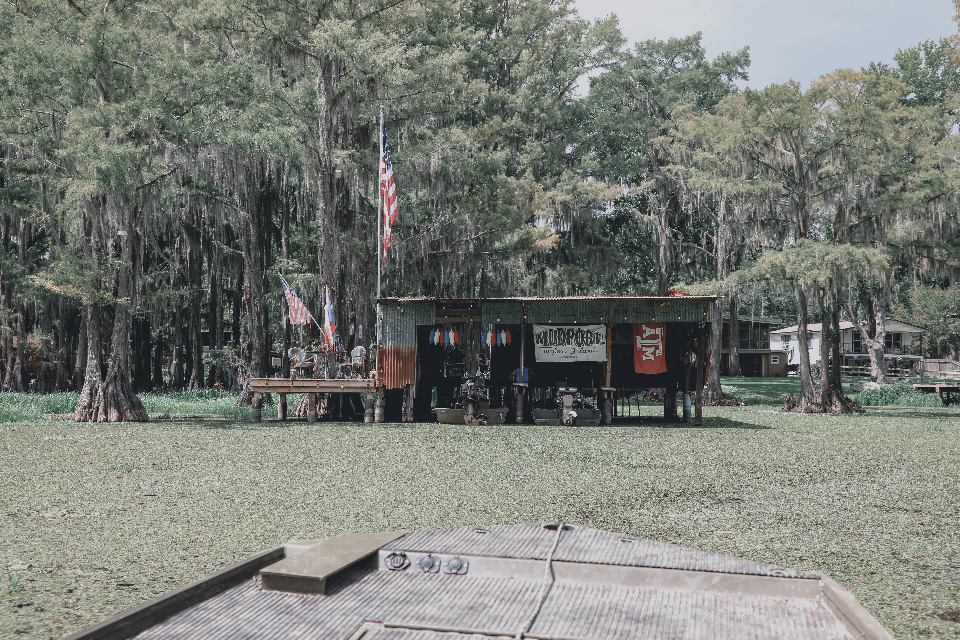
own private back yard or a place where we can drill for oil and gas,” she said. “I think the Louisiana side could begin to look at Caddo as a real point of pride for our area. “We are blessed with a lot of lakes. Some people have never been to Caddo. They love to go to Cross. They love to go to Bisteneau. That’s great. But I think it’s a point of pride to have such an ecological jewel and such a pretty lake. I think we can start taking visitors over there and taking boat rides.” Caddo Lake Institute received a grant from the Community Foundation to replant native trees around the lake
at Earl G. Williamson Park in Oil City. Overdyke also is seeking to establish an official state paddle trail on the Louisiana side of the like. The institute is eager to address any concerns — ecological or economic — on both sides of the lake. “We are super nimble, so we can focus on whatever the most pressing issues are at the lake,” Overdyke said. “Our biggest role is to coordinate resources at the local, state and national level to address whatever the issues are at the lake.” It’s all a labor of love for Overdyke, who remembers fondly learning to water ski on Caddo Lake when she was 5 years old. “My mom would be like, ‘Beware of sucker rods,’” she recalls. “I made her explain sucker rods to me. She said old oil and gas rigs, they put this metal pole. But then the water level rises and it covers up the metal pole. And I am like, ‘How am I supposed to be aware of those, then?’ It made me a decent little skier. I didn’t want to fall, because I was kinda scared of being impaled by a sucker rod. And I was pretty confident there were alligators and big gar, water moccasins in the water, so I’d generally get up in the first attempt, because that was some good motivation. I loved Caddo. Some of my best buddies, we’d be up there together every weekend.”
Overdyke enjoyed science and considered being a doctor. But after struggling with a chemistry class, she changed her mind and double-majored in English and religion.
She worked in Washington, D.C., a number of years before returning to Shreveport, where she worked for the Community Foundation. All of her different jobs had the theme of “do-goodery, nonprofit-y, storytelling kind of stuff,” she said. “The nonprofit thing brought me to the Caddo Lake Institute. I like science, so I could understand what the scientists were telling me and repeat it.” Overdyke is eager to see the Louisiana side of Caddo Lake catch up to the Texas side in its fame. “I want Shreveport to benefit,” she said. “I am a Shreveport girl. I would like to see Shreveport begin to see Caddo Lake as a real asset.” caddolakeinstitute.org/help
LEARN MORE
HELP US PROTECT THE ECOLOGICAL, CULTURAL & ECONOMIC INTEGRITY OF CADDO LAKE
